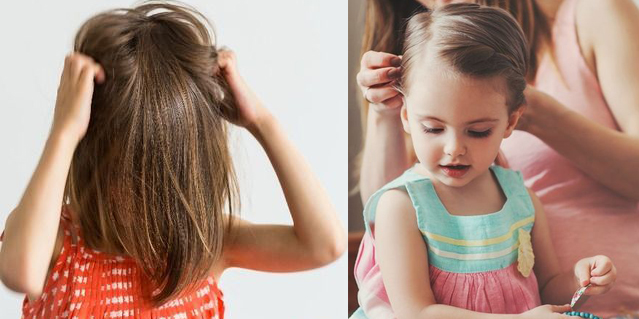
The thought of lice creeping through the family wardrobes and scalps is a spine tingling, head scratching notion; a notion many of us get to face as hard fact when that dreaded letter shows up from school. An outbreak of lice is no laughing matter; but it doesn’t need to cause fear and tears either. September is Lice Prevention Month, so let’s get the facts straight and squash those little buggers before a family epidemic arises.
Myth and Fact
Lice DO NOT jump (or fly, or swim). They are fast crawlers who like to be nice and warm and near their food source—human blood. The amount of heat our bodies throw off means that we—yes, adults and kids alike—are the perfect breeding grounds.
Cleanliness and personal hygiene have no effect on who gets lice and who doesn’t. Believe it or not, head lice much prefer clean hair over dirty, but there are still preventative steps to take to make an infestation less likely.
Lice are a uniquely human parasite adapted to living in human head hair and cannot live more than 48 hours without a human host. No pets or animals can be infected.
Prevent
Lice prevention starts with early detection. This means regular family head checks (2 to 3 times a week) at home while your kids are in school, or daycare, and in contact with so many other human heads.
What are you looking for? Adult lice resemble grayish brown sesame seeds in shape and size. You are also checking for eggs (tiny white dots that resemble dandruff) and nits (the empty eggshell that’s also dandruff-like, but extra sticky) near the scalp but attached to the hair shaft.
Because head lice are most commonly found on the scalp, behind the ears and near the neckline at the base of the head, the next step in prevention: Avoid head-to-head contact. Young ones who haven’t yet mastered the concept of body space, and teens jumping on the group selfie train are especially susceptible.
Teach your kids good habits: Avoid sharing hairbrushes, combs, hairclips, binders, hats, bike helmets, scarves, coats, towels and even headsets and earbuds. Don’t share lockers, desks, clothes hooks and closet space. Lice can survive 48 hours without a host; they have the time to crawl from article of clothing to article of clothing. Avoid these risky situations whenever possible.
Eliminate
First, recognize the signs:
- Feeling something moving in the hair—even a light tickling feeling.
- Lots of itching—and not just from reading this post. An allergic reaction to the lice bites may cause your kids to scratch uncontrollably.
- Look for sores on the head caused by the excessive scratching. These may be easier to spot than the actual head lice.
- Head lice are most active in the dark, so notice if your tiny tots are abnormally irritable and are having difficulty sleeping.
Next, once you find the lice and their eggs, treat the problem. There are a number of different remedies around—everything from harsh chemicals to home remedies, and an increasing number of natural-based solutions.
Think about these items whilst searching for the right solution for your family:
- Head lice are over a million years old, and like the rest of us, they have learned to adapt and survive. The newer “super lice” can be resistant to some of the most popular treatments out there.
- Insecticides found in many of the chemical-based treatments are becoming ineffective and also can be harmful to you and your children.
- Combing out works, but it can be tedious. Home remedies are quicker but some are just as ineffective and also harmful to your little ones.
- A number of small studies have shown that some natural-based ingredients work to repel lice; these are not regulated or tested by the FDA.
Finally, once treated, isolation and heat are paramount to stopping a lice relapse. Hot water laundry and high heat drying work wonders in the fight against head lice on all articles of clothing, bedding, car seats and hair accessories that may have been infected. Keeping your infected little one home from school is a good idea and typically the school and CDC protocol.
Check out this printer friendly Head Lice Checklist from Ladibugs Hair Care to make sure you have everything covered. https://www.ladibugsinc.com/how-to-clean-after-head-lice/
Lice Prevention Starts at Snip-its
Talk to one of our Kids’ Hair Experts about the best prevention products available. And also, check out the Snip-its website for more great tips and tricks on preventing and treating head lice.

